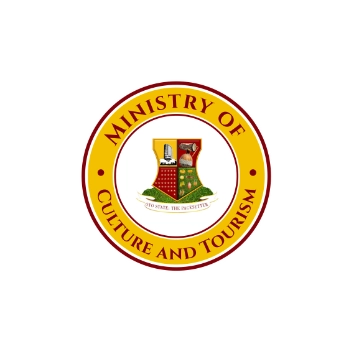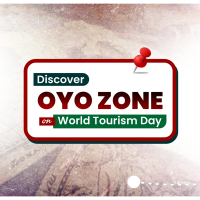History of Oyo State
The modern history of Oyo State can be traced to 3 February 1976, when the State was carved out of the former Western Region. The size of the State was further reduced when Osun State was created on 27 August 1991.
The present landmass of Oyo State is 27,249 square kilometres. It comprises 33 Local Government Areas and 35 Local Council Development Areas divided into five zones.
Oyo State is centrally located and serves as a thoroughfare from Southwestern Nigeria while exiting Lagos State, Nigeria’s commercial capital, to other zones. It is traditionally a nodal town bounded in the south by Ogun State, in the north by Kwara State, in the west it is partly bounded by Ogun State and partly by the Republic of Benin, while in the East by Osun State.
Local Government Areas (LGAs) in Oyo State
- Afijio
- Akinyele
- Atiba
- Atisbo
- Egbeda
- Ibadan North
- Ibadan North-East
- Ibadan North-West
- Ibadan South-East
- Ibadan South-West
- Ibarapa Central
- Ibarapa East
- Ibarapa North
- Ido
- Irepo
- Iseyin
- Itesiwaju
- Iwajowa
- Kajola
- Lagelu
- Ogbomoso North
- Ogbomoso South
- Ogo Oluwa
- Olorunsogo
- Oluyole
- Ona Ara
- Orelope
- Oriire
- Oyo East
- Oyo West
- Saki East
- Saki West
- Surulere
Local Council Development Areas (LCDAs) in Oyo State
- Aare Latosa
- Ajorosun
- Akinyele East
- Akinyele South
- Akorede
- Araromi
- Asabari
- Atisbo South
- Ibadan East
- Ibadan South
- Ibadan West
- Ibarapa North East
- Ibarapa North West
- Ifeloju
- Iganna
- InuKan
- Irepodun
- Iseyin South
- Iwa
- Lagelu North
- Lagelu West
- Ogbomoso Central
- Ogbomoso South West
- Ogo Oluwa West
- Oke’badan
- Omi-Apata
- Oriire North
- Oriire South
- Oyo South-East
- Oyo South-West
- Soro
- Surulere North
- Surulere South
- Wewe
- Ajowa
The Oyo State landscape consists of old hard rocks and dome-shaped hills, which rise gently from about 500 meters in the south and reach a height of about 1,219 metres above sea level in the north.
Oyo State is almost homogenously Yoruba. So, there are sub-ethnic groups with distinct dialect peculiarities. The indigenes mainly comprise:
The Ibadans
The Ibarapas
The Ogbomosos
The Oke-Oguns
The Oyos
all belonging to the Yoruba family and indigenous city in Africa, south of the Sahara. Other notable cities and towns in Oyo State include:
- Awe
- Eruwa
- Igbo-Ora
- Igboho
- Igbeti
- Ilero
- Ilora
- Iseyin
- Kisi
- Lanlate
- Okeho
- Saki
- Sepeteri
Local Government Areas (LGAs) in Oyo State
- Afijio
- Akinyele
- Atiba
- Atisbo
- Egbeda
- Ibadan North
- Ibadan North-East
- Ibadan North-West
- Ibadan South-East
- Ibadan South-West
- Ibarapa Central
- Ibarapa East
- Ibarapa North
- Ido
- Irepo
- Iseyin
- Itesiwaju
- Iwajowa
- Kajola
- Lagelu
- Ogbomoso North
- Ogbomoso South
- Ogo Oluwa
- Olorunsogo
- Oluyole
- Ona Ara
- Orelope
- Oriire
- Oyo East
- Oyo West
- Saki East
- Saki West
- Surulere
Local Council Development Areas (LCDAs) in Oyo State
- Aare Latosa
- Ajorosun
- Akinyele East
- Akinyele South
- Akorede
- Araromi
- Asabari
- Atisbo South
- Ibadan East
- Ibadan South
- Ibadan West
- Ibarapa North East
- Ibarapa North West
- Ifeloju
- Iganna
- InuKan
- Irepodun
- Iseyin South
- Iwa
- Lagelu North
- Lagelu West
- Ogbomoso Central
- Ogbomoso South West
- Ogo Oluwa West
- Oke’badan
- Omi-Apata
- Oriire North
- Oriire South
- Oyo South-East
- Oyo South-West
- Soro
- Surulere North
- Surulere South
- Wewe
- Ajowa
The Oyo State landscape consists of old hard rocks and dome-shaped hills, which rise gently from about 500 meters in the south and reach a height of about 1,219 metres above sea level in the north.
Oyo State is almost homogenously Yoruba. So, there are sub-ethnic groups with distinct dialect peculiarities. The indigenes mainly comprise:
The Ibadans
The Ibarapas
The Ogbomosos
The Oke-Oguns
The Oyos
all belonging to the Yoruba family and indigenous city in Africa, south of the Sahara. Other notable cities and towns in Oyo State include:
- Awe
- Eruwa
- Igbo-Ora
- Igboho
- Igbeti
- Ilero
- Ilora
- Iseyin
- Kisi
- Lanlate
- Okeho
- Saki
- Sepeteri


